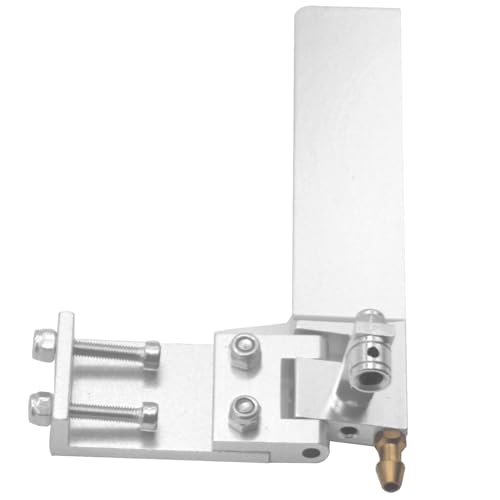Guys,
All this discussion about wings is very interesting, but completely off base, as we are not talking about a wing, we are talking about a stationary RUDDER. It's not about lift, it's about direction. If a turnfin is generating lift, either horizontally or vertically, it is doing more than it is intended to do and is consuming energy to do so, which is scrubbing speed. If the bernoulli principal is involved in any way, this is also scrubbing speed. You can do whatever you want with the length, depth, thickness, shape, curl, hook, angle, whatever........ The leading edge should be sharp, with as gradual of a parting of the water as possible, and the trailing edge as square as possible with the sharpest edges possible. All other properties will obviously have an affect on how well the boat turns, but when you get done shaping and bending, always get a turnfin back to a condition of gradual lead-in, square exit and sharp edges everywhere it gets wet.
Thanks. Brad.
Titan Racing Components
BlackJack Hydros
Like it or not, if a fluid is flowing (or more correctly, an object is moving through a fluid), Bernoulli is involved. That equation (set of equations) is (are) THE defining physical properties of fluid flow. The square corners at the back and the front edge break ventilate the flow. Air bubbles in the fluid flowing along the surface reduce the friction. The bubbles change the properties of the fluid, and the separated (ventilated) flow has less drag. The resisting force of the fin or rudder is 'lift'; if not, the fin would not resist, and the boat would skid sideways.
But this is all semantics. Bernoulli is far too complex to apply without a Cray supercomputer to analyze all the variables. Just remember, a symetrical wing (straight chord line) at 0 angle of attack has no 'lift'. The same for a turn fin. The angle of attack on the fin occurs when the boat turns. Same with the rudder. And filing the edge on only one side makes the fin asymetrical, so it has a slight amount of 'lift' (assuming the flow stays attached). I suspect the momentum thrust on the leading edge is greater than the lift due to the flow separation at the break on the outboard edge. Hence Andy's recommendation to leave the edge on the CMDI fins alone.
In closing, all of this has a foundation in fluid dynamics. But it is far to complex to get a clear cuase and effect relationship. As Mr. Finch stated, it is best to just go out and test. See what works, and then see if you can make it better. Everything will have an effect on everything else. What works on my setup may not work on yours. But it isn't magic, either. There is science behind it. Just that the science is actually very complex; so complex, that you can easily get lost and a small detail will completely change the result.











































